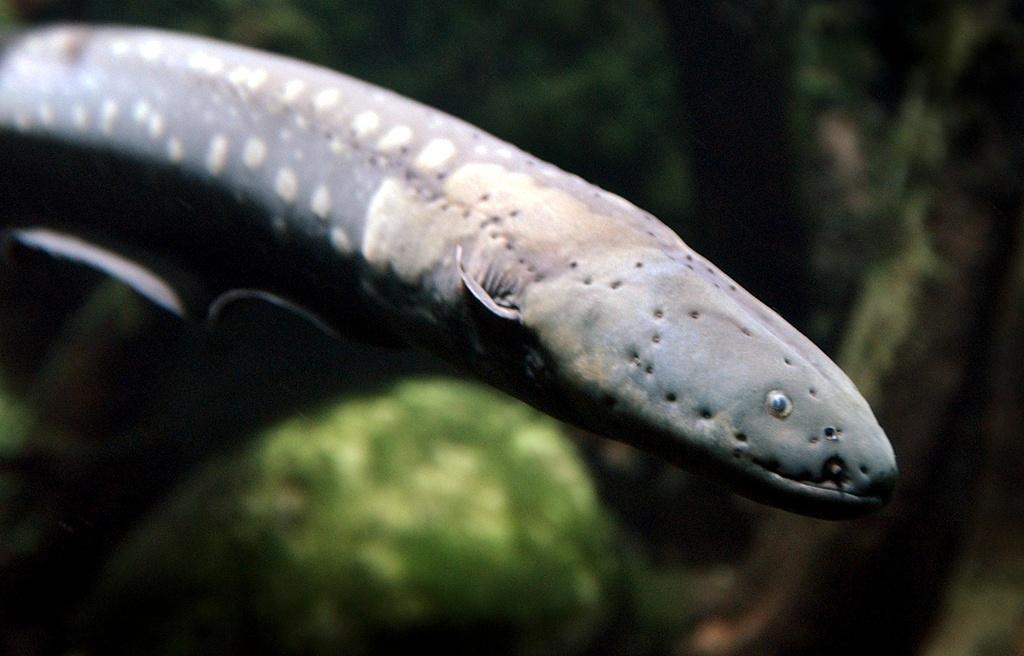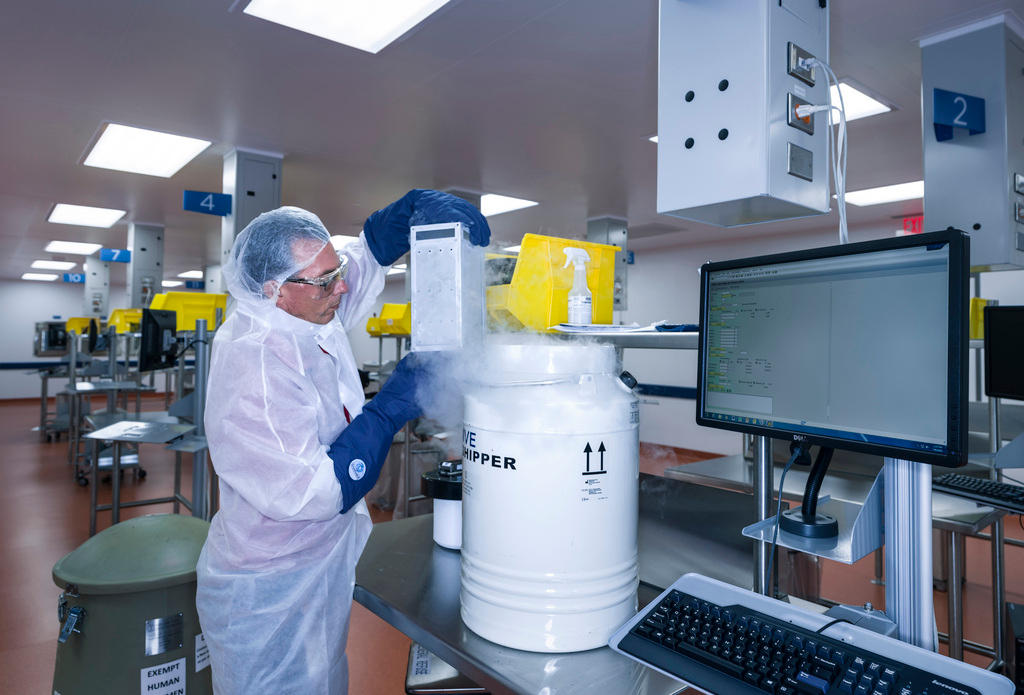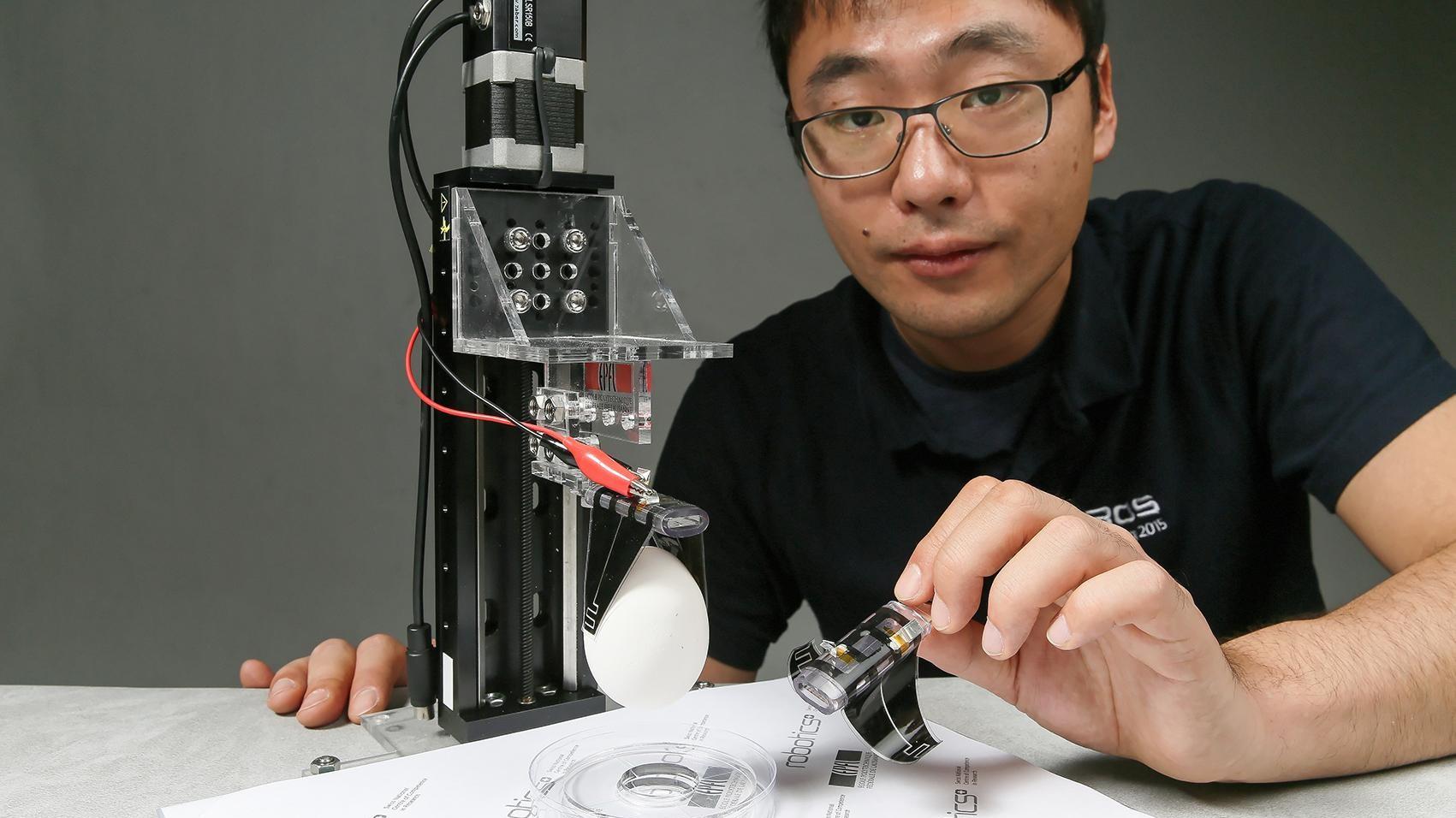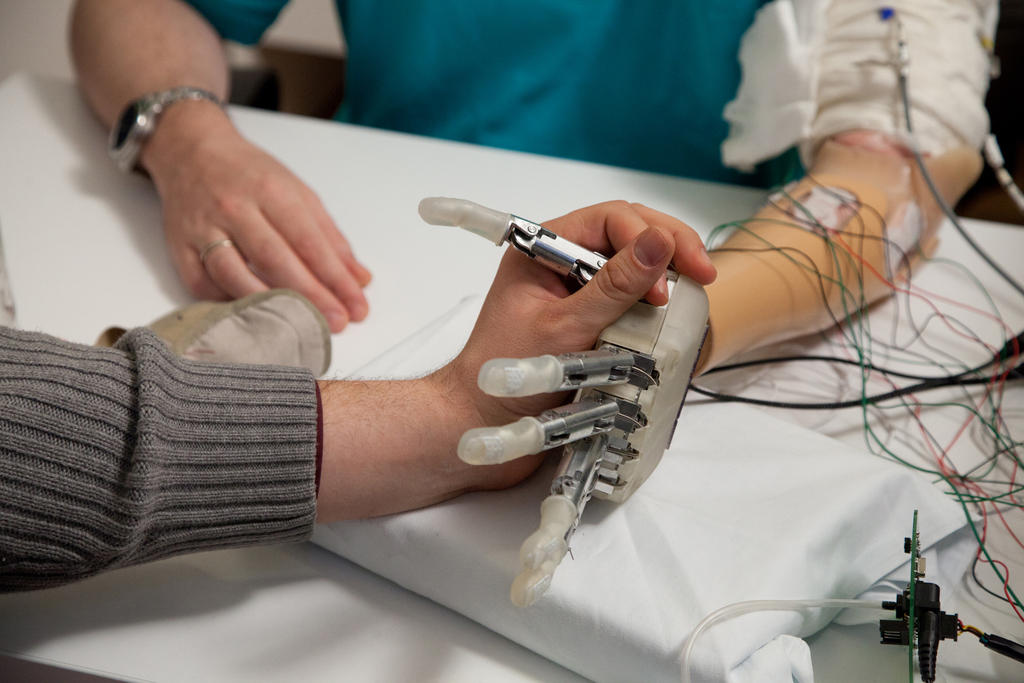Researchers design a power source modelled on the electric eel

In a search for self-powered solutions for biologically implanted applications, researchers have come up with a model based on an unlikely source: the electric eel.
The impetus behind the project – carried out by scientists from the universities of Fribourg, Michigan and California San Diego – was to develop a source of power that is biocompatible, flexible and able to draw its energy from inside a biological system.
This would allow its usage in ever-more common bionic applications such as pacemakers, sensors or prosthetics, which are difficult to keep hooked to any external power source.
According to a press releaseExternal link, the team thus “designed an eel-inspired power source that generates electricity based on the salinity difference between fresh water and salt water”.
Putting the two in contact with each other – separated by a permeable membrane – can result in a sudden rush of positive ions into the low-salt compartment, leaving behind a negatively charged high-salt compartment. If another membrane with opposite properties to the first is then factored in, the reverse process takes place – thousands of times in quick succession if arranged correctly.
Self-powered organs
This makes it possible to generate 110 volts simply from salt and water, similarly to how the electric eel generates energy by allowing the passage of sodium and potassium ions through long thin cells stacked throughout its body.
The results, published by the scientific journal NatureExternal link, are still far from matching the generative capacity of an eel – 1,000 times lower, according to Fribourg professor Michael Mayer.
However, he said that “it is realistic to improve the performance by a factor of ten with better membranes, and then possibly by another factor of ten by efficient engineering”.
Could we be looking at self-powered organs in futuristic bionic humans? For Mayer, the major challenge in that case would be to tap into the body’s metabolic energy – for example by harnessing ion variations in zones such as the stomach – before diverting it for use in an artificial electric application.
swissinfo.ch and agencies/dos

In compliance with the JTI standards
More: SWI swissinfo.ch certified by the Journalism Trust Initiative











You can find an overview of ongoing debates with our journalists here . Please join us!
If you want to start a conversation about a topic raised in this article or want to report factual errors, email us at english@swissinfo.ch.